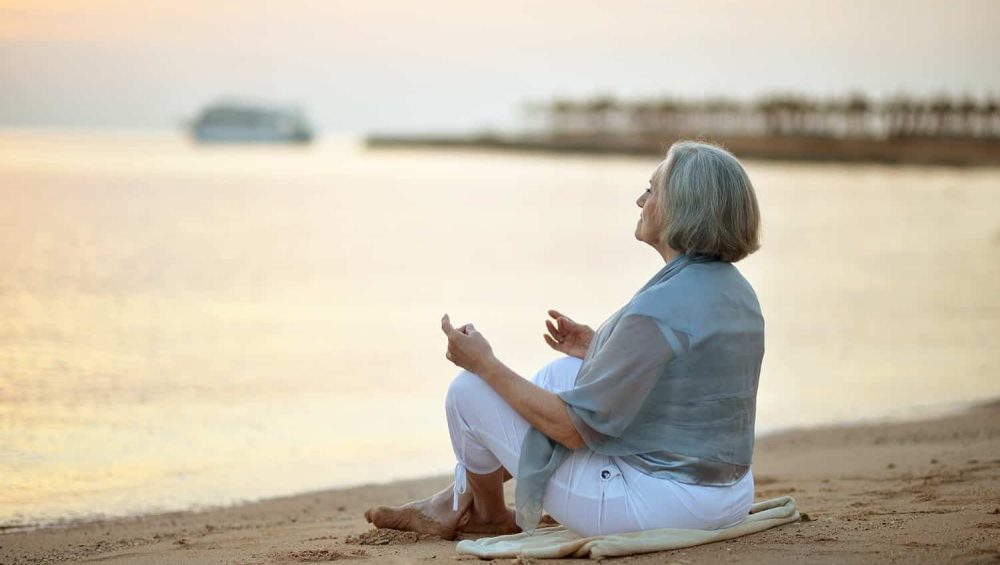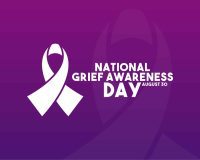Pain can take on several different dimensions including physiological (the actual physical sensation and the person’s accompanying response), cognitive (patients who might anticipate pain based on memories of when they had pain in the past), and emotional. Hospice is about providing comfort and dignity at the end-of-life and so it’s not uncommon for hospices to use several mindful techniques which help patients and their families with ways to help relieve stresses that can come from terminal illnesses, including side effects of medication and effects from the illness itself.
There are a multitude of mindfulness therapies available to hospice patients that have proven to be successful in symptom and pain management. Some popular therapies include mindful yoga, healing touch/massage therapy, aromatherapy, music/sound therapy, guided meditation, and art therapy. Even just holding someone’s hand can be considered focused touch therapy.
The goal of these techniques is to support hospice in providing various methods to induce restfulness, calmness and alleviate anxiety and pain. One therapy doesn’t work better than another — it’s all a matter of personal choice and what works best for the individual patient at any given time. Many of these can be combined for greater benefit and relief, so feel free to experiment with what works best for them.

Guided Meditation
The benefits of guided meditation require no work or effort on the listener’s part – even very fatigued, passive, half-asleep or dispirited patients can use it because all that’s required is listening and it uses the altered state that many dying patients naturally drift in and out of anyway, making them highly receptive. It’s widely known that imagery elevates serotonin levels and thus serves as a natural pain reducer. Because of this, it can reduce the need for analgesic medication and allow patients to be more alert and awake, which is often their preference. Imagery also reduces anxiety, agitation, fear, and distress – as well as provides peace and comfort. Of all the senses, imagery only requires the ability to hear.
Hearing is frequently available to a hospice patient, even after other senses have waned. Guided imagery works especially well when combined with touch, gentle massage, reflexology, energy work, (Therapeutic Touch, Reiki or Healing Touch), acupuncture or other forms of bodywork, commonly used in palliative care.
Mindful Yoga
Mindful yoga offers a simple, practical way to develop awareness of breathing and thinking that is non-judgemental and compassionate. Awareness of held body positions and muscles (tight shoulders, collapsed chest) is cultivated and reversed and simple exercises, suitable for even the most disabled patient are taught and practiced each week in order to release and strengthen primary and secondary respiratory muscles. Able to be practiced in a group or as a single patient, mindful yoga can also employ silent meditation and guided relaxation.
Healing Touch/Massage Therapy
During the pre-active stage of the dying process, Ann Catlin, founder of the Center for Compassionate Touch and an expert in the field of massage therapy in eldercare and hospice recommends sensitive massage of the arms, legs, feet and hands, as well as slow-stroke back massage.
According to Catlin, back massages done with the patient in side-lying position applying long, alternating strokes to the large muscle groups along either side of the spine and stroking down the body from the upper to lower back promotes deep relaxation and can help patients who are having trouble falling asleep.
For the active stage of the dying process, attentive touch or holding is good, particularly if the person is frail and can’t tolerate touch. Massage therapists might also move a part of the patient’s body for positional change such as adjusting the bed or adding support pillows under the arms or legs to ease the pressure. Gentle stretching may also be incorporated if tolerated by the patient.
Aromatherapy
Aromatherapy, also referred to as essential oil therapy, can be defined as the art and science of utilizing naturally extracted aromatic essences from plants to balance, harmonize, and promote the health of body, mind, and spirit. It seeks to unify physiological, psychological, and spiritual processes to enhance an individual’s innate healing process. The non-invasive nature of aromatherapy, coupled with its minimal side effects, is ideal in end-of-life care. Many individuals nearing the end of life have significant depression, anxiety, or lack of energy, and aromatherapy can help promote a sense of well-being. While aromatherapy cannot prolong life or cure a terminal illness, it can help make the situation more bearable for those involved.
Two essential oils used in particular are often lavender and orange.
Lavender (Lavandula angustifolia) has a fresh, sweet, floral, herbaceous aroma that is soothing and refreshing. Lavender is used for restlessness, insomnia, nervousness, and depression. It is also used for a variety of digestive complaints including meteorism (abdominal swelling from gas in the intestinal or peritoneal cavity), loss of appetite, vomiting, nausea, intestinal gas (flatulence), and upset stomach.
Orange (Citrus sinensis) essential oil has a rich, fruity scent that lifts the spirit while providing a calming influence on the body. Orange brings peace and happiness to the mind. Orange essential oil is used to relieve spasm, stimulate digestion, combat tumors, stop blood from clotting, and relieve depression.
Click here to learn more about our music therapy program.
Additional Links:
https://samaritannj.org/hospice-care/complementary-therapies/aromatherapy/
http://journals.sagepub.com/doi/abs/10.1177/104990910201900607
https://www.nhpco.org/press-room/press-releases/music-therapy-helps-hospice-patients-and-families
http://planetree.org/planetalk/music-therapy-in-hospice-a-natural-vehicle-for-patient-centered-care/
https://www.hospicegso.org/practicing-mindfulness-to-relieve-stress/
https://opinionator.blogs.nytimes.com/2015/08/14/zen-and-the-art-of-dying-well/
https://www.amtamassage.org/articles/3/MTJ/detail/2636/massage-hospice
http://blog.healthjourneys.com/update-from-belleruth/meditation-for-hospice-care.html




